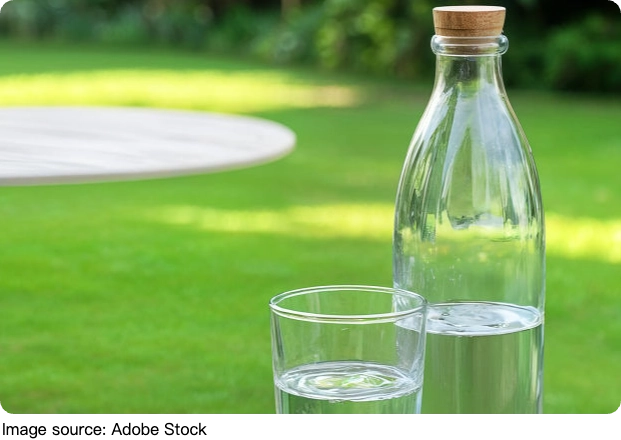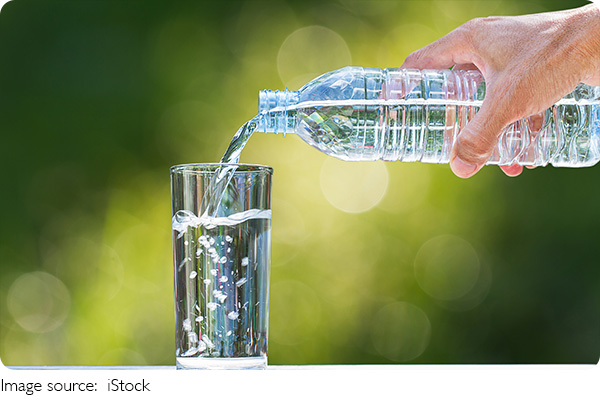Water's Hidden Power

Have you ever stopped to think about the glass of water on your table? It looks clear, tasteless, and ordinary. But in reality, water is one of the strangest and most fascinating substances in the universe.
Though its chemical formula—H₂O—may seem simple, the science behind water reveals something far more complex.
Let's dive deep into the molecular mystery of water and discover why it's anything but simple.
Understanding Water's Structure
Water is made up of two hydrogen atoms and one oxygen atom. These atoms are held together by covalent bonds, where electrons are shared between the atoms. However, what makes water special is the angle between the hydrogen atoms.
Instead of forming a straight line, water molecules form a bent shape, with a bond angle of approximately 104.5°. This bent structure creates a polar molecule, meaning that the oxygen end has a slight negative charge, and the hydrogen ends have slight positive charges. This charge separation makes water behave in ways unlike most other molecules.
The Magic of Hydrogen Bonding
One of water's most incredible features is its ability to form hydrogen bonds. These are weak attractions between the positive end of one water molecule (hydrogen) and the negative end of another (oxygen). While each hydrogen bond is weak, billions of them acting together give water its unique physical properties.
Hydrogen bonding explains why:
• Water has a high boiling point for such a small molecule.
• Ice floats on water.
• Water can absorb large amounts of heat.
Without hydrogen bonding, water wouldn't behave the way it does—and life as we know it might not exist.
Water's High Heat Capacity
Water can absorb and retain heat better than most substances. This is called high specific heat capacity, and it's the reason oceans and lakes remain relatively stable in temperature.
This property helps regulate Earth's climate, preventing extreme temperature swings between day and night. It also allows our bodies—made mostly of water—to maintain a steady internal temperature even when our surroundings change.
Why Ice Floats
You might think that solid versions of a substance should be denser and heavier than their liquid forms. But not with water!
When water freezes, the molecules form a crystal structure that spaces them farther apart. This makes ice less dense than liquid water, which is why it floats. This unique property allows aquatic life to survive under frozen lakes in winter, as the insulating layer of ice keeps the water beneath from freezing solid.
Universal Solvent Abilities
Water is often called the "universal solvent" because it can dissolve more substances than any other liquid. This is due to its polarity. The positive and negative ends of water molecules pull apart other molecules—especially salts and polar compounds.
This ability plays a crucial role in nature and in your own body. For example:
• Water carries nutrients and minerals through soil to plants.
• Blood (which is mostly water) transports oxygen and nutrients to your cells.
Surface Tension and Cohesion
Have you ever noticed how water forms droplets on a surface or how insects can walk across water? That's due to water's surface tension, which results from hydrogen bonding at the surface.
Water molecules stick to each other (cohesion) and to other materials (adhesion), leading to effects like:
• Water climbing up a paper towel.
• Rain sticking to your window.
• Sap rising in trees (a process called capillary action).
These seemingly simple actions are driven by complex molecular interactions.
Water and Life
All living organisms rely on water. It acts as a medium for chemical reactions, helps regulate temperature, and serves as a transport fluid inside and outside cells. In fact, more than 60% of the human body is water.
Cells are surrounded by and filled with water. The way water interacts with proteins, DNA, and other molecules is essential for life to function. Scientists even search for signs of water when exploring other planets because it's so closely linked to the possibility of life.

Water's Anomalous Expansion
Most materials contract when they cool. But water behaves differently between 0°C and 4°C—it expands when cooled. This anomaly is another result of hydrogen bonding.
It's why water pipes can burst in winter and why lakes freeze from the top down, not the bottom up. This strange behavior helps protect aquatic ecosystems and prevents bodies of water from freezing solid in cold climates.
Does Water Have Memory?
Some fringe theories suggest that water can "remember" substances that were once dissolved in it, even after extreme dilution. While this idea has been largely dismissed by mainstream science, the debate highlights how mysterious water can seem—even to experts.
That said, water's ability to form structured networks of hydrogen bonds and to respond to different environments is a real and active area of scientific research.
Is Water Really Simple?
On the surface, H₂O looks like one of the simplest molecules in existence. But dig deeper, and you'll discover a molecule with rare and complex behaviors. Its role in chemistry, biology, climate science, and everyday life is enormous.
From regulating the temperature of the planet to making up your cells, water is anything but simple. Its odd properties—like floating ice, high heat capacity, and strong cohesion—make it essential to life and science.
Final Thought: A Simple Wonder?
So, is water a simple molecule? Technically, yes—it has just three atoms. But in behavior, structure, and importance, water is surprisingly complex.
Next time you take a sip, remember: you're holding one of nature's most astonishing molecules.
What's your favorite fact about water? Drop your thoughts and share what surprised you the most—we'd love to know!


